GET OUR 2025 PRICING SHEET
Understanding Google’s Ranking Factors
Google employs an automated system that indexes web pages on the internet, making it easier to retrieve in response to user queries. Google algorithmically assesses these indexed pages based on a variety of factors that are ultimately meant to help users find the information that they are looking for. As such, when you Google something, results from the index that the algorithm has determined are most applicable to your search query will be closer to the top of the SERP (search engine results page). This tiered visibility in search is commonly called ranking, as it speaks to how Google determines relevance and relative value concerning every search.
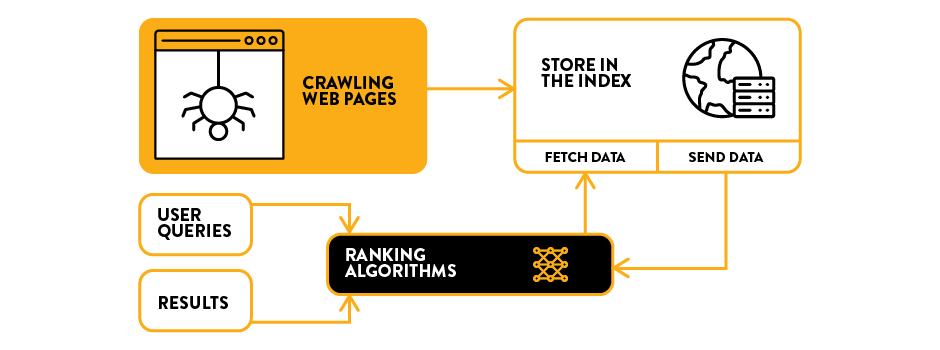
This determination is based on a wide range of factors, many of which can be influenced by content creators and link builders if they have an understanding of Google’s ranking factors — the metrics and features that Google algorithmically assesses and interprets based on searches. Ultimately, however, it is important to always bear in mind that because the Google algorithm’s ultimate goal is to serve the user the most helpful results possible, understanding your audience and what they are looking for is paramount when building optimized content online. You can rank well in the SERPs by knowing and serving your audience with quality content even if you don’t know much about Google’s ranking factors.

While it can be helpful to know what Google’s ranking factors are, it is also important to understand their weight and underlying purpose. Furthermore, many factors can influence your page’s rank even if they are not an actual ranking factor, as many components have value based on correlation with user needs and preferences, which underlie all actual ranking factors, and are therefore often captured in the net of multiple ranking factors. The sum of ranking factors is greater than their parts.
Keyword Optimization
Keywords and queries are ultimately what a webpage aims to rank for, so it naturally holds that use of specific keywords on-page and in certain elements is a major Google ranking factor. This can be thought of as a whole series of ranking factors, rather than just a single factor, as Google is capable of reading and understanding language in a variety of ways.
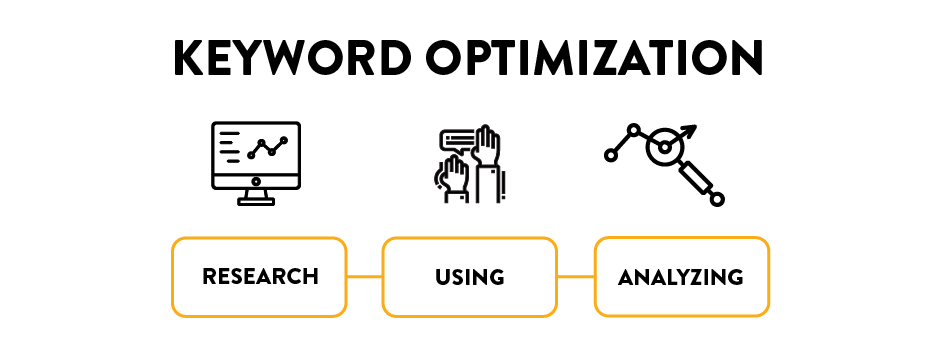
Where keywords appear (in titles, in links, in the body copy) matters, as does the use of natural language and organic variations — in other words, using keywords fluently rather than just repeating target terms ad nauseum. Many of the other ranking factors listed below matter partially as a medium for demonstrating keyword optimization.
Title Tags
A title tag is an HTML element that designates the title of a page and is listed in the SERP. An effective title tag can strengthen keyword signals for your webpage. Ideally, the title tag should describe the page and utilize relevant keywords.
Backlinks
A backlink is an inbound link to your web page from an external source. It can strengthen authority signals on your web page and overall site, as it demonstrates that others find your website to be an authoritative source.
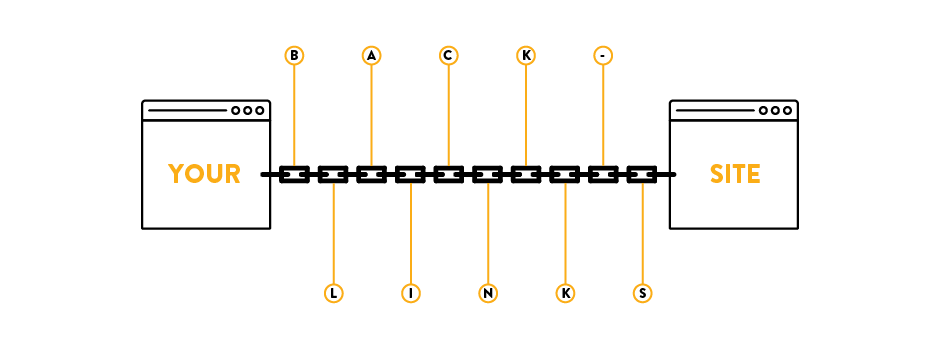
The total quantity of backlinks matters, as can the number of linking domains (a single external site can link to multiple pages on your site; earning links from multiple domains adds value), the relevance of the links, the age of the links, and a host of other factors.
Internal Linking
Internal links are links on a page that point to other pages on the same domain. These contribute to ranking due to their potential to share authority between pages. When you link between different pages on your domain, keyword signals, page authority, and other elements of meaning and relevance can be shared between the pages.
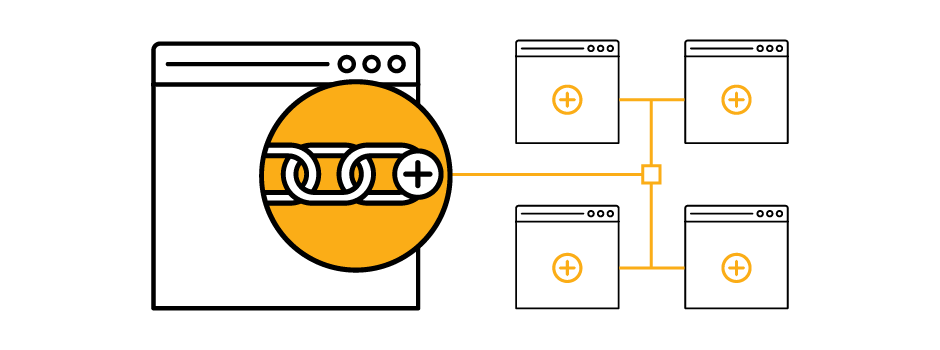
Internal linking influences how Google discovers and crawls new content on your site, helps the value of backlinks influence pages other than the ones being directly linked to by other sites, and generally shows how important different pages are to one another.
Anchor Text
Anchor text is the hyperlinked text for any link on a page. The Google algorithm uses anchor text to determine what your content is about, and how relevant the given information is to potential users.

Anchor text should ideally describe the page that it is linking to. Anchor text ideally will be relevant and descriptive all on its own, while also being relevant and natural in context. Generic anchor text (like using “here” or “link”) adds little to no value, while artificially keyword-rich anchor text may be seen as unnatural or an attempt to spam the algorithm.
Freshness and Content Updates
Google prioritizes more recently updated pages for many queries, especially those that have to do with topics that change regularly or on an ongoing basis, such as news. Additionally, posting regularly encourages web crawlers to more frequently update your pages in the index. You should not only regularly post new content, but also update older content to improve quality and include more relevant information.
Page Speed
Page speed refers to how quickly web pages load on a website. Low page speed can interfere with the indexation of your pages due to the limitations of a search engine’s capacity for crawling. Additionally, good page speed is a good indicator of overall quality and user experience. Page load speed should be under two seconds.
Website Security
Website security refers to how secure pages on a website are. The algorithm assesses how secure a website is to determine how credible and user friendly it is as well. The first and foremost thing you should do to accomplish to convert your site structure to use the encrypted HTTPS protocol.
Mobile Friendliness
Mobile-friendliness refers to how well a website or web page operates on a mobile device. Mobile-friendliness is a good indicator of site quality and user experience.

Benchmarks of mobile-friendliness include readability, ease of navigation, and page speed. Most sites must use a responsive design to allow browsers on all devices and screen sizes to correctly display content.
Taking a Holistic Approach to SEO
Rather than trying to optimize every page for every ranking factor, it may be more beneficial to your site and your visitors if you take a more holistic approach. Broadly, all of Google’s ranking factors fall into one of three categories:
- On-Page (things you can edit by changing the content on an individual page, like title tags or the use of keywords; the primary goal of most content creation is on-page optimization);
- Off-Site (the signals that surround your website, but you don’t directly control, like backlinks pointing to you; link building campaigns in congress with underlying content creation can help influence these factors);
- Technical (the HTML underlying your site, as well as other design features that impact visitors, but aren’t necessarily visible just by reading your content; technical SEO factors may be discovered by replicating the crawler path or analyzing the code on important pages).
Ideally, by considering the following points, you will be able to create content that is optimized for Google’s primary ranking factors as well as being useful to visitors and readers.
Understanding and Satisfying Searcher Intent With Keyword Content
Keyword content is any asset (such as a blog post) that is developed to strengthen authority signals associated with specific keywords. For example, a shoe retailer might produce blog posts such as “How to Choose Your Next Running Shoe,” or “What Causes Plantar Fasciitis?”
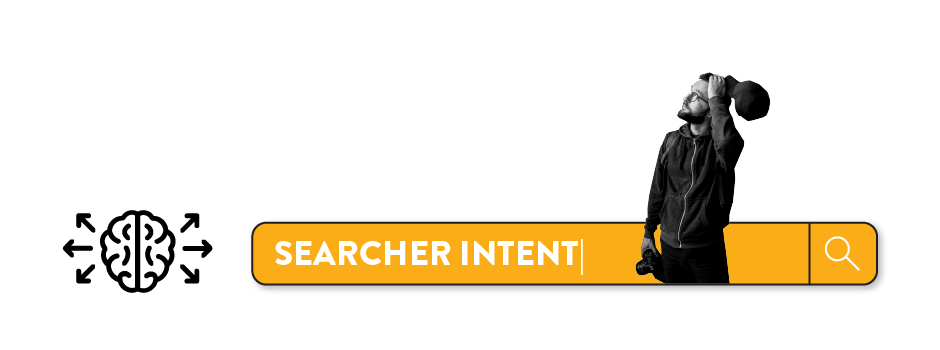
These topics focus on keywords that are likely used by their target audience. Because this is a ranking factor that you can manage on your own website, keyword content development is a type of on-page SEO.
However, focusing only on achieving a high keyword density is not enough to ensure a page deserves to rank for those keywords. You also have to satisfy searcher intent, which means you need to understand what your audience is really asking, why they are asking it, and how to answer their question effectively.
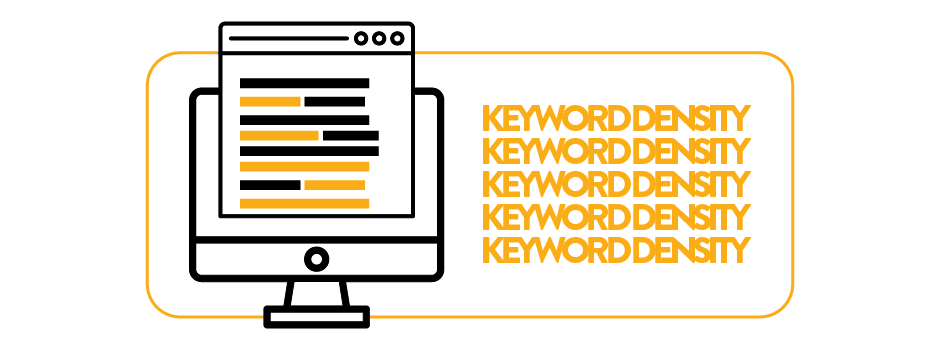
For example, a user searching “insole outsole midsole” is likely looking for an explanation of the differences between these terms. And while it will be important to include these three keywords, you don’t want to miss the forest for the trees and fail to answer the question. User needs are king; keyword density is just a quick way to assess if you appear to be focused on a subject, but it can’t tell you if you’ve provided a satisfactory answer.
Creating Content That Earns Links
Backlinks are a critical ranking factor, but one that you cannot directly control because the links must come from other websites. This can make off-site SEO one of the more challenging parts of an SEO campaign, as you have to find a way to earn links, and put your site somewhat at the mercy of other editors and content creators.
Linkable content is an online asset that is developed to earn backlinks. A linkable content strategy employs a combination of on-page and off-page SEO, as you must create content on your website that appeals to other websites and audiences in order to earn links. Developing content that is intended to encourage backlinks is an example of on-page SEO, whereas any outreach you do to encourage those backlinks is an example of off-page SEO.

The strategy for doing this can vary. However, typically, it involves creating content that is intended to reach not only your own audience, but also niches covered by other websites. For example, the hypothetical shoe retailer may write a piece called, “A Guide to Choosing Sustainable Footwear,” in order to appeal to audiences on blogs that cover issues regarding sustainability. This appeal may lead sustainability blogs to link to your page, earning you backlinks and the associated authority signals.
Auditing Technical SEO
Technical SEO is the optimization of technical components of a website such as those that can be adjusted in the coding. The goal of this is largely to facilitate crawling and indexing of web pages, though technical SEO can ultimately support a link building campaign, ensure the optimal flow of keyword and link signals across your domain, and more.
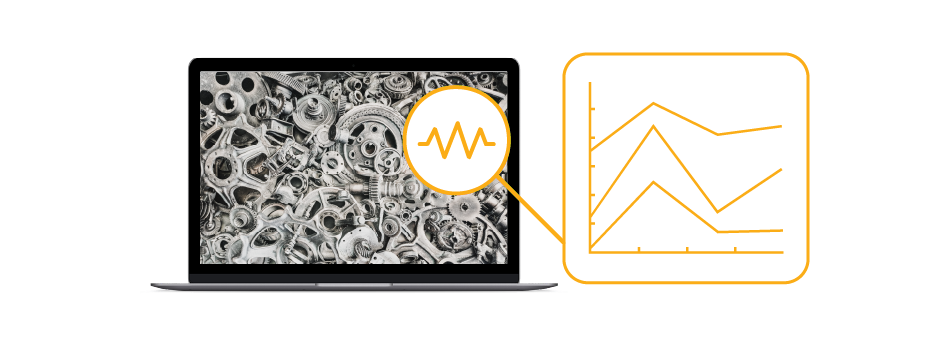
A technical site audit will typically examine a site’s HTML elements, data structure, and loading speed optimization. Such an audit may reveal why other efforts — like on-page optimization or link building — aren’t having the desired effect, or help you discover why Google doesn’t appear to be crawling and indexing your site. It may even reveal that your site design or content organization is suboptimal, that you need to update your security, or a litany of other technical factors that may not be immediately apparent when viewing or navigating your site. Auditing your site on a yearly, semi-yearly, or monthly basis can help protect your site against many of these technical factors.
General Optimization Best Practices
Some general best practices for optimization include:
- Image alt text: Image alt text is a description of each image on a page. It improves the user experience for users with visual impairments and can help strengthen keyword signals.
- Consider humans and bots: While optimization for the sake of appealing directly to the algorithm can benefit your ranking, it is important to also optimize for user experience. Optimization that appeals directly to the algorithm should be subsidiary to optimization for user experience, as user experience is ultimately what the algorithm is intended to serve.
- Clean copy: Clean copy — meaning keeping grammar, spelling, and other typographical errors to a minimum — demonstrates the credibility and quality of your content, in addition to generally improving user experience.
- Not spammy: Spammy content not only negatively impacts user experience, but can also result in penalties. Spam can entail content that is excessively optimized for keywords (by including unnaturally high keyword density, for instance), as well as link spam that seeks to pass authority through links without adding contextual value to a page.
- Factually correct: Ensuring that your content is factually correct is important to establish credibility on your website, as well as to effectively inform your users.
- Searcher intent: If you are not providing content that offers the information that users are looking for, you are unlikely to continue to attract readership or backlinks.
Things That Aren’t Ranking Factors
Many strategies are often mistakenly thought to be ranking factors that aren’t. However, it is important to remember that although these strategies are not direct ranking factors, they can still have SEO value.
URL
A URL is a web page’s address. While URLs aren’t a direct ranking factor, they are often a direct reflection of the underlying structure of a website, and therefore how content is organized on that website. If you have a lot of content or a lot of subfolders (for example, different categories on an e-commerce site), it makes sense to organize that content consistently, and to create URLs that will indicate where each page lives on your site. You should follow a standard URL structure, and create a URL that describes the page rather than using a randomly generated URL. However, there is no evidence that having descriptive or keyword-rich URLs influences the keyword-optimization of the page itself.
Domain Age
Domain age is the amount of time that a domain has existed. While this may correlate with high ranking due to accrued authority and backlinks over time, it is not in itself a quantified ranking factor.
Domain Authority (DA)
Domain authority, or DA, is not a ranking factor; rather, it is a metric meant to represent the cumulative value of a domain’s backlink portfolio, accounting for the age, quality, and quantity of backlinks pointing to a site. It can be a great tool for gauging a site’s relative SEO performance, but it is not and never has been part of Google’s algorithm.
E-A-T
E-A-T, which stands for Expertise, Authoritativeness, and Trust, does not describe a single measurable ranking factor. There is no “E-A-T score” or another number that can be used to quantify everything that contributes to a site’s reputation in Google’s index.

This is because E-A-T was an acronym originally shared by Google to describe what makes “quality content” for search. E-A-T is better thought of as a way to remember that a multitude of factors (keywords, links, searcher intent, clean copy, etc.) all combine to influence a page’s ranking. You cannot optimize your E-A-T, but you can do things like earn links and answer your audience’s questions, that contributes to your site’s overall signals of authoritativeness, expertise, and trustworthiness.
Headings and Subheadings
Headings and subheadings are HTML elements that designate the page title and subsections of a webpage. Including headers is a best practice for web content as they can be helpful for crawlers to understand the content of your page and scrape content, and they can allow readers to more easily skim or interpret your content, but they are not a direct ranking factor.
Meta Descriptions
A meta description is a snippet that describes the content of the page underneath a title tag in a SERP. While it can be valuable for user experience so that users know what they can find on a page, and can even influence click-through to your content, it is not a direct ranking factor.
Bounce Rate
Bounce rate is how quickly a user leaves a page after clicking on it. This is not a ranking factor, but it can be used as an indicator of user experience.
Social Media Shares or Likes
While shares on social media can be beneficial for bringing more traffic to your website, and even indicate user engagement and brand trust or authority, this is not a ranking factor.
Authorship
This is another indirect signal of value and authority that is important, but does not directly contribute to search rankings. A well-known author can lend credibility to a page in the eyes of a user, but authorship is no longer a ranking factor.
It is important to keep in mind that direct ranking factors can change based on algorithm updates. However, the goal of these updates is typically to improve user experience, which means that if you keep user experience in mind when implementing your SEO strategy, you will be on the right track.
Services
Resources
Contact Us
We believe in helping businesses find success in search.
Through our partnerships, we help you acquire more business with sustainable link building and strategic content.
Better Links. Better Content. Better Service. Page One Power.
7154 W State Street, Suite 325
Boise, ID 83714

x
2025 PRICING SHEET
Every website is unique. Our link building campaigns are tailored to your specific SEO needs to ensure we utilize the best tactics for your site. In addition, each campaign comes complete with a dedicated project manager who provides full transparency throughout the entire campaign.
Fill out the form to get Page One Power’s 2025 Pricing Sheet to learn more about our services and pricing.
Copyright © 2025 Page One Power. All rights reserved.
